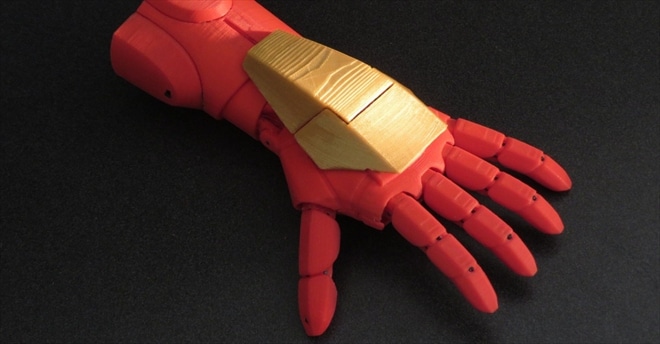One designer and animator is making the most of the latest 3D-printing technology in order to create fun, functional alternatives for young amputees.
Pat Starace, who is both an animator and a mechanical designer, is in the process of creating a line of prosthetics that would make children feel like their favorite Avengers.
The first, and perhaps the most fitting, was an Iron Man-inspired prosthetic hand.
For Starace, it wasn’t enough to just have a product that looked like Iron Man’s arm, but he also wanted it to have some sort of functional cyborg-like abilities for its young wearers.
The arm comes complete with an LED light that resembles Iron Man’s thrusters and fun voice control abilities.
The arm also comes with Bluetooth connectivity, a battery, a USB charger and computing technology that senses the physical world around it.
Starace told Mashable that the entire goal of the prosthetics is to help boost the self-esteem of young amputees to “superhero levels.”
In the future, Starace hopes to add even more interesting technology to the prosthetic.
He believes the arm could be paired with wireless devices, smartwatches, sensors NFC technology and much more.
He also explained to Mashable that while the current model could be placed on a child’s arm today, it doesn’t boast any real-world application just yet.
Thanks to the quickly developing technology behind 3D printing, however, it won’t be long before it is easier to mass produce prosthetic limbs and at a fraction of the cost.
That’s where the proposed superhero prosthetics would really save the day.
Prosthetic limbs are incredibly expensive, but 3D-printing technology could create prosthetics that are much more affordable and easy to make.
This isn’t the first prosthetic to be created on a 3D printer either.
For years now, tech experts have been able to create 3D-printed prosthetics, but they have not been able to create cheaper versions that mirror the quality and comfort of traditional prosthetics.
For now, however, Starace’s Iron Man-inspired prosthetic hand has the potential to come extremely close to giving parents a less expensive 3D-printed option that would also make their child feel more confident.

